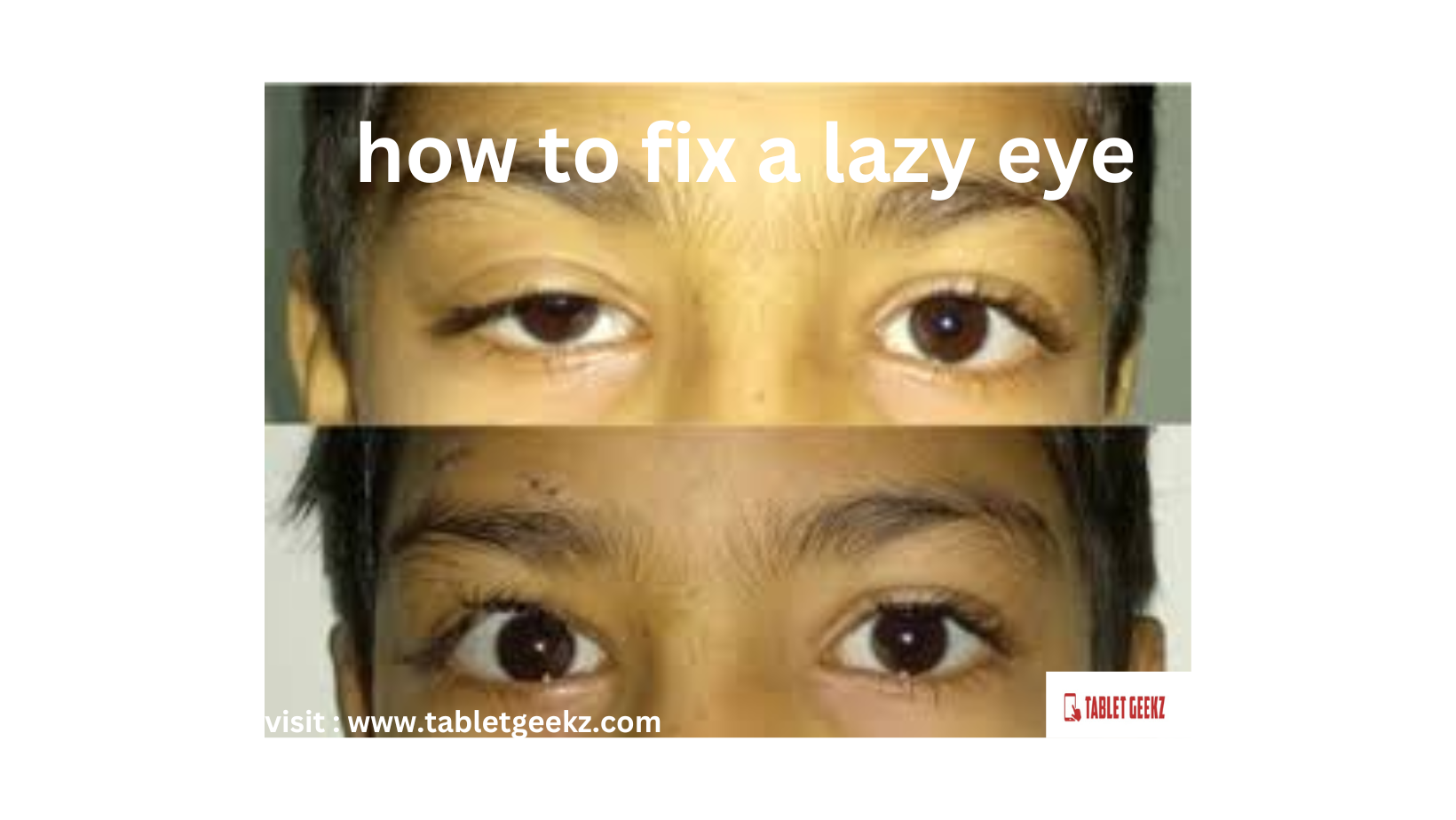Correcting a Lazy Eye: Understanding Treatment Options

Strong 8k brings an ultra-HD IPTV experience to your living room and your pocket.
A lazy eye, medically termed amblyopia, occurs when there is a lack of proper development in vision during childhood. This condition often manifests as one eye having poorer vision than the other. Early detection and intervention are crucial for successful treatment. Understanding the approaches How to fix a lazy eye can significantly improve visual outcomes.
What Is a Lazy Eye?
Amblyopia usually develops in childhood, typically before the age of seven. It occurs when one eye has better focus and stronger vision than the other, causing the brain to favor the stronger eye. As a result, the weaker eye doesn't receive adequate stimulation and visual development, leading to reduced vision over time.
Symptoms of a Lazy Eye
Detecting a lazy eye might be challenging without a comprehensive eye examination, but some signs and symptoms include:
Squinting: The affected eye may tend to turn inward or outward.
Poor Depth Perception: Difficulty judging distances or bumping into objects.
Eyes Not Working Together: Trouble focusing both eyes on the same object.
How to Fix a Lazy Eye
Treatment for a lazy eye primarily aims to strengthen the vision in the weaker eye and improve its coordination with the stronger eye. Several approaches can be utilized:
Corrective Lenses: Prescription glasses might be prescribed to correct refractive errors and improve vision in the weaker eye.
Patching: Covering the stronger eye with an eye patch for several hours a day forces the brain to rely on the weaker eye, stimulating its visual development.
Eye Drops or Atropine: In some cases, using atropine drops in the stronger eye blurs its vision temporarily, encouraging the weaker eye to work harder.
Vision Therapy: This involves exercises and activities designed to strengthen the muscles around the eye and improve visual coordination.
Surgery: In certain situations, surgical intervention might be recommended to correct misaligned eyes or other structural issues affecting vision.
Early Intervention is Key
The success of treating a lazy eye largely depends on early detection and prompt intervention, ideally before the age of seven. The brain's ability to adapt and retrain the visual system decreases with age, making it more challenging to correct the condition as a child grows older.
Consultation with an Eye Specialist
If you suspect a lazy eye or notice any signs of reduced vision in your child, it's crucial to consult with an eye specialist or pediatric ophthalmologist. They can perform a comprehensive eye examination to diagnose amblyopia and recommend an appropriate treatment plan.
Commitment to Treatment
Consistency and commitment to the prescribed treatment plan are vital for successful correction of a lazy eye. Regular follow-ups with the eye specialist help monitor progress and make any necessary adjustments to the treatment regimen.
Long-Term Outlook
With early and consistent treatment, many children with a lazy eye can experience significant improvement in vision. However, some cases might require ongoing management to maintain the visual gains achieved through treatment.
Conclusion
While fixing a lazy eye might require a combination of treatments and dedication, early detection and intervention offer the best chances for successful correction. Seeking professional evaluation by an eye specialist and adhering to the recommended treatment plan are crucial steps toward improving vision in the affected eye. With proper care and timely intervention, it's possible to enhance visual function and quality of life for individuals with amblyopia.
Note: IndiBlogHub features both user-submitted and editorial content. We do not verify third-party contributions. Read our Disclaimer and Privacy Policyfor details.


